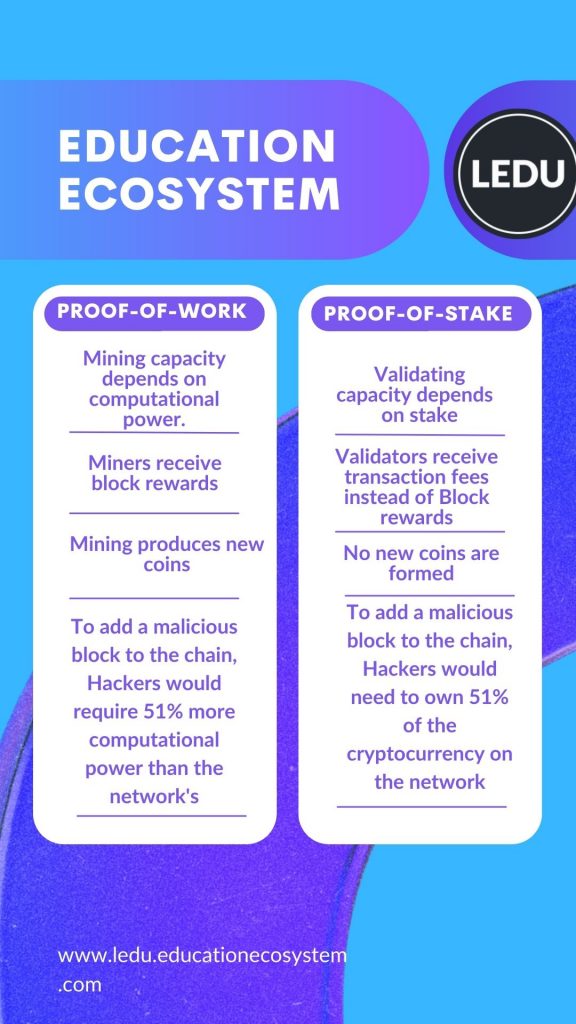
Key Terms:
Gas Fees: Simply fees paid to process a transaction on any blockchain. Like the tip you give to the dealer after a game of Poker.
Scalability: This refers to the ability of a blockchain to handle a high number of transactions within a short period.
Proof of work: This is a consensus mechanism requiring a high amount of computational effort to obtain a coin.
Proof of Stake: Another consensus mechanism involving randomly selected validators to validate transactions on its network.
Ethereum Killers: Alternative blockchains to Ethereum which have proven better efficiency, such as Ethereum, Binance Smart Chain, Cardano, etc.
Introduction:
Ethereum firmly laid claim to the second-place position just behind Bitcoin. In such a competitive space, it achieved this feat with a highly secure and ingenious blockchain. Ethereum ushered in the ‘use of smart contracts in blockchain’ which enabled ownership and easy transferability of assets. Hence, it was the perfect nesting point for the popular ERC-721 non-fungible tokens (NFTs).
This gift of increased users has also taken the form of a curse for Ethereum. The network is currently strained as it is facing difficulties meeting up with increased demands, causing extremely high gas fees, in some instances even redirecting users to transact on other chains.
The scalability issues plaguing the Ethereum network is forcing users to move to alternative blockchains with improved scalability, like Solana. This article attempts an in depth look at the cause and solution to Ethereum’s high gas fees.
The Problems
- Consensus Mechanism – Ethereum uses a consensus mechanism similar to that of Bitcoin, Proof of work (PoW). Prized for its foolproof security, the proof of work mechanism achieves this at the cost of huge energy consumptions. It is estimated that the proof of work mechanism consumes around 8 gigawatts yearly. When compared to the 3 megawatts of the proof of stake (PoS) mechanism, it’s easy to see why the latter makes for a more efficient blockchain.
- The Relationship – Ethereum & NFTs
Only those who live under rocks have never come across the abbreviation, NFTs (Non-fungible Tokens). And it is for this same reason the Ethereum blockchain is being strained.
NFTs were launched on the Ethereum blockchain, and quickly they rose to fame with an estimated value of $4.3B in 2021. This value is predicted to rise by 33% annually. Since Ethereum operates a PoW consensus mechanism, it’s only limited to a maximum of 15 Transactions per second. And here’s the debacle. With such a small processing ability, Ethereum is now heavily congested due to the surplus demands from NFTs, leading to extremely high gas fees.
This has discouraged developers from building projects on the Ethereum network, citing the option of other efficient blockchains like Solana and the Binance Smart Chain. Traders similarly have found various means to evade the high gas fees on the Ethereum blockchain, one such is painstakingly waiting till the network is at its off-peak period to get cheaper gas fees. It is important to mention that since May 2022, Ethereum has experienced a 4% drop in its global crypto market share.
The Solution? Ethereum 2.0
Sighting the impending doom to the Ethereum network, Vitalik Buterin, the co-founder proposed a solution to Ethereum’s scalability woes. This move was aimed at raising Ethereum’s processing power to boost its transactions per second from a mere 15 to 100,000. It would also see Ethereum transitioning from a Proof of Work consensus mechanism to a Proof of Stake. The transition has been divided into phases.
The Beacon chain which was completed earlier this year was designed to allow users the opportunity to stake their current ETH to become validators on the Proof of Stake. The next phase this September is The Merge, which is simply the transfer of history and data of the Ethereum blockchain over to the new PoS network. The final phase, due 2023 is Sharding, which is simply the shifting of Ethereum into multiple portions for improved efficiency.

Final thoughts
Ethereum has shown reduced figures and the numbers have been predicted to worsen as more Ethereum Killers spring up. More users are opting for Ethereum alternatives such as Solana and Binance Smart Chain (BSC), both using the proof of stake (PoS) consensus mechanism. Ethereum 2.0 has promised to adopt the PoS mechanism but there are looming questions over its capabilities against other PoS blockchains. Will Ethereum 2.0 stand a test against Solana and BSC? Can’t say for sure. But the fact is, Ethereum’s days are coming to an end.







